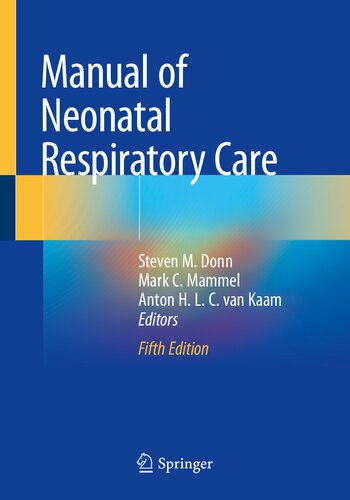

Most ebook files are in PDF format, so you can easily read them using various software such as Foxit Reader or directly on the Google Chrome browser.
Some ebook files are released by publishers in other formats such as .awz, .mobi, .epub, .fb2, etc. You may need to install specific software to read these formats on mobile/PC, such as Calibre.
Please read the tutorial at this link: https://ebookbell.com/faq
We offer FREE conversion to the popular formats you request; however, this may take some time. Therefore, right after payment, please email us, and we will try to provide the service as quickly as possible.
For some exceptional file formats or broken links (if any), please refrain from opening any disputes. Instead, email us first, and we will try to assist within a maximum of 6 hours.
EbookBell Team

4.3
98 reviewsRespiratory care is the largest overall component of neonatal intensive care, and the fifth edition of the Manual of Neonatal Respiratory Care is the leading bedside guide for all aspects of respiratory care in the neonatal intensive care unit. Its easy-to-read outline format is simple yet comprehensive and covers all aspects of lung disease in the newborn infant, including embryology, principles of mechanical ventilation, procedures and techniques, monitoring, devices, adjunctive therapies, management of respiratory illness, complications, outcomes, and related issues.
The latest edition includes fully revised and updated information, coverage on new equipment and devices, and an expanded authorship to enhance its international appeal. The new edition also features two new co-editors, Dr. Mark Mammel and Dr. Anton Van Kaam, internationally recognized experts in the field who bring a fresh perspective to the manual.
Divided into sixteen sections, the book begins with a section on lung development and maldevelopment, specifically covering the development of the respiratory system, malformations, deformations, disorders of the neonatal airway, and developmental lung anomalies. The second section reviews the principles of mechanical ventilation, with coverage on such topics as spontaneous breathing, oxygen therapy, oxygen toxicity, pulmonary mechanics, and ventilator parameters. The third section of the manual outlines procedures and techniques, including neonatal resuscitation, laryngoscopy and endotracheal intubation, and tracheostomy. The following section dives into the monitoring of the ventilated patient, specifically focusing on continuous monitoring techniques, clinical controversies in pulse oximetry, and echocardiography. The next section spotlights noninvasive ventilatory techniques, such as nasal interfaces, humidified high-flow nasal cannula therapy, and sustained inflation.